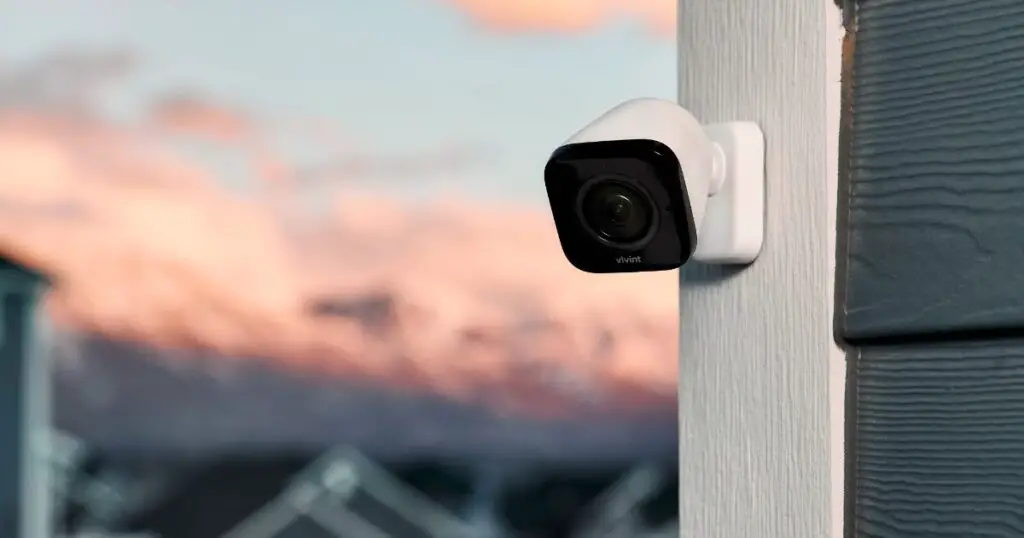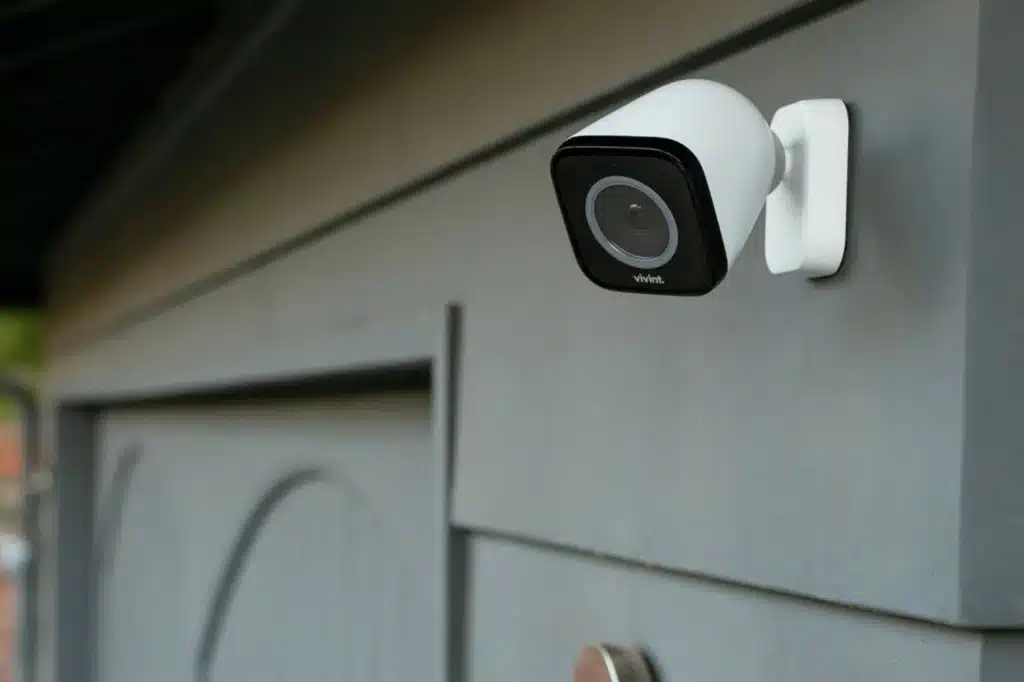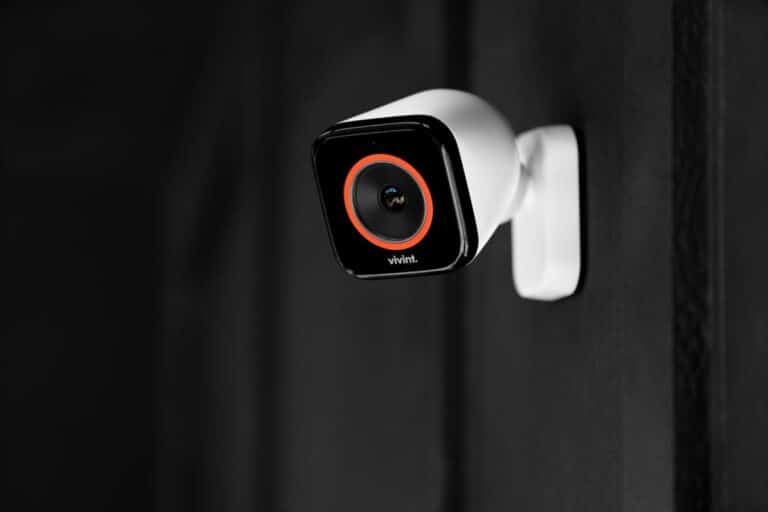Introduction
How To Remove Vivint Outdoor Camera: Homeowners that want to increase security often choose Vivint outdoor cameras. These cameras provide 24/7 video surveillance and advanced functionality. Vivint outside cameras can be removed for maintenance, relocation, or system upgrades.
Removing a Vivint outdoor camera requires a careful and systematic approach to ensure that the process is carried out safely and efficiently. In this guide, we will walk you through the step-by-step instructions on how to remove a Vivint outdoor camera. Whether you are a DIY enthusiast or a beginner, this guide will provide you with the necessary information to complete the task successfully.
Before proceeding with the removal process, it is essential to understand the components of a Vivint outdoor camera system. These typically include the camera itself, mounting brackets, power cables, and network cables. Familiarizing yourself with these components will make the removal process smoother. Vivint’s customer support for specific instructions tailored to your camera model. Following the manufacturer’s guidelines will ensure that you do not void any warranties or damage the equipment during the removal process.

How is the Vivint outdoor camera powered?
Vivint’s Cat 5 cable powers the camera from the wall outlet-plugged PLC. The PLC transfers the video across your electrical lines to your hub after recording it over the Cat 5 connection.
The Vivint outdoor camera requires a constant supply of electricity to operate. It typically connects to a power source using a power adapter or power over Ethernet (PoE) technology. The specific power supply method may vary depending on the camera model and installation setup.
Your Vivint outdoor camera’s power adapter will have a cord that plugs into an outlet. This strategy is often utilized when the camera is near an outlet. The power adapter transforms AC outlet voltage into DC camera voltage.
On the other hand, if your camera supports PoE, it can be powered through the Ethernet cable that also carries data to and from the camera. PoE eliminates the need for a separate power adapter as it utilizes the existing network infrastructure. To use PoE, your network switch or PoE injector must support the PoE standard. This method is convenient when the camera is installed at a distance from an electrical outlet.
The Vivint outdoor camera also requires a network connection for data transmission and remote access. This is typically achieved through an Ethernet cable or a wireless connection, depending on the camera model and configuration.
What type of cameras does Vivint use?
Your Vivint Smart Home security system supports monitoring for up to four Vivint-compatible cameras, including the following: Vivint Indoor Camera Pro. Vivint Outdoor Camera Pro. Vivint Doorbell Camera Pro.
Indoor Cameras: Vivint offers indoor cameras that are specifically designed for monitoring the inside of your home. These cameras are typically compact and discreet, allowing them to blend seamlessly into any room. They provide high-definition video quality and various advanced features such as two-way audio, night vision, and motion detection. Indoor cameras from Vivint are ideal for keeping an eye on your home’s interior, checking in on pets, monitoring children, or even as a baby monitor.
Outdoor Cameras: Vivint’s outdoor cameras are specifically engineered to withstand the elements and provide reliable surveillance of the exterior areas of your property. These cameras are weather-resistant and built to handle rain, snow, and extreme temperatures. They often feature wide-angle lenses, high-resolution video, night vision capabilities, and advanced motion detection technology. Outdoor cameras are an essential component of any home security system, allowing you to monitor your property’s entry points, deter potential intruders, and capture clear footage of any suspicious activity.
Doorbell Cameras: Vivint offers doorbell cameras that combine the functionality of a traditional doorbell with advanced surveillance features. These cameras usually display live footage of visitors at your front entrance. Most doorbell cams offer two-way audio, so you can communicate to people remotely using your smartphone or other devices. They can detect motion and notify you to activity near your entrance. This simplifies and protects.
How do I remove and add Vivint doorbell?
Vivint Doorbell Camera Pro – Delete and Re-Add
- Go to Device settings on your panel.
- Delete your camera.
- Reset your doorbell camera.
- Wait until the doorbell resets.
- Return to your panel and re-add your camera.
- Return to your camera to complete pairing.
- Wait while your panel and doorbell camera connect.
Disconnect Power: Before removing the doorbell, ensure that the power supply is disconnected. Locate the power source, which is typically a transformer connected to your home’s electrical system. Turn off the power to the doorbell circuit by switching off the corresponding breaker in your electrical panel.
Remove the Faceplate: Gently remove the faceplate of the doorbell by either sliding it upwards or using a screwdriver to unscrew any screws securing it in place. Set the faceplate aside in a safe location.
Disconnect Wiring: Carefully detach the wiring from the back of the doorbell. Typically, the wiring will consist of two or three color-coded wires (such as red, white, and green). If necessary, use a screwdriver to loosen the terminal screws and remove the wires.
Remove Mounting Bracket: The doorbell may be attached to a mounting bracket or plate. Unscrew any screws securing the doorbell to the bracket and remove the doorbell from the bracket. Keep the bracket intact if you plan to reuse it or remove it if no longer needed.
Does Vivint have cameras?
The suite of products typically included in a Vivint security system includes: Outdoor Camera – Wireless, HD security camera with infrared night vision that gives you on-demand access to a live video feed and sends notifications to your phone when motion is detected around your home.
Live Video Streaming: Vivint cameras allow you to view live footage remotely, providing real-time visibility into your home.
Cloud Storage: Recorded video footage is securely stored in the cloud, ensuring that you have access to it even if the camera is tampered with or damaged.
Smart Motion Detection: Vivint’s cameras use intelligent motion detection technology to send instant alerts to your smartphone or other connected devices when suspicious activity is detected.
Two-Way Communication: With two-way audio capabilities, you can communicate with people at your home through the camera, even if you’re away.
Vivint offers a range of camera solutions as part of their comprehensive home security systems. These cameras provide homeowners with enhanced surveillance capabilities, allowing them to monitor their homes in real-time and deter potential threats. Whether you’re looking for indoor cameras, outdoor cameras, or doorbell cameras, Vivint’s camera solutions offer a wide range of features and benefits to meet your security needs.

Do Vivint outdoor cameras have sound?
If someone is detected and lingers too long, the Outdoor Camera Pro plays a loud sound and illuminates its LED ring, letting the lurker know they’ve been spotted.
Deterrence: The ability to communicate through the outdoor camera can act as a powerful deterrent. By addressing potential intruders or suspicious individuals, you can make it clear that you are aware of their presence, discouraging them from further unwanted actions.
Remote Interaction: Two-way audio enables you to remotely interact with individuals near your outdoor camera, even when you are not physically present. This can be useful for giving instructions to delivery personnel or communicating with family members who may be outside.
Monitoring and Assessment: Audio capabilities provide a more comprehensive picture of what is happening outside your home. By listening to conversations or sounds in the vicinity of the camera, you can better assess the situation and respond accordingly.
Enhanced Communication: Two-way audio can be particularly beneficial during emergencies or urgent situations. For example, if you notice an unsafe condition or someone in distress, you can quickly communicate with them and provide assistance or alert authorities.
Can I use my Vivint camera without service?
You can use Vivint equipment without a subscription, but you wouldn’t have the benefit of professional monitoring, couldn’t access the mobile application, and won’t be able to use the 24/7 technical support service
Local Recording: Vivint cameras usually have local storage options, such as an SD card slot, that allow you to store recorded footage directly on the camera itself. By utilizing local storage, you can still capture video and review it later without the need for a service plan. Your ability to access footage remotely or benefit from additional features like cloud storage.
Self-Monitoring: If you choose not to subscribe to Vivint’s professional monitoring service, you can still utilize the cameras for self-monitoring purposes. This involves accessing the camera’s live feed and recorded footage directly through its local interface or a dedicated mobile app. While self-monitoring allows you to keep an eye on your home, it does not provide the same level of security and response as professional monitoring.
Integration with Third-Party Systems: Vivint cameras may be compatible with certain third-party smart home platforms or security systems. By integrating the cameras into these systems, you may be able to access their basic functionalities, such as live streaming or local recording. However, the extent of integration and available features may vary depending on the specific third-party system and its compatibility with Vivint cameras.
How many cameras does Vivint support?
Vivint allows up to six cameras per account. So you might want to choose another system like Ring Alarm if you want tons more cameras, more affordable storage, and cheaper professional monitoring.
Basic and Advanced Plans: Vivint provides different service plans, each with varying levels of camera support. While specific details may vary, typically, Vivint’s basic plans support a limited number of cameras, often ranging from 1 to 4 cameras. Advanced plans, on the other hand, tend to offer higher camera limits, allowing homeowners to connect and support a larger number of cameras, sometimes up to 8 or more.
System Capabilities: The camera support within Vivint systems is also influenced by the capabilities of the central control panel or hub. The control panel acts as the central command center for your Vivint security system, including camera integration. The specific model of the control panel may have limitations on the number of cameras it can support. The specifications and compatibility of the control panel when considering the number of cameras you plan to connect.
Device Compatibility: Another factor to consider is the compatibility of the Vivint cameras themselves. Different camera models may have varying compatibility with the Vivint system. It is advisable to consult with Vivint’s customer support or refer to the product documentation to determine the maximum number of cameras supported by specific camera models.
Network Bandwidth: An often overlooked aspect of camera support is the available network bandwidth. Each camera in your Vivint system will require a certain amount of bandwidth to transmit the video feed and other data. If you plan to install a significant number of cameras, it is crucial to ensure that your network can handle the increased bandwidth requirements to maintain reliable performance.
How long does Vivint keep recordings?
For 30 days
Recording that never stops
The Vivint Smart Drive stores every minute of footage from your indoor, outdoor, and doorbell camera for 30 days. The Vivint app or Smart Hub with security DVR lets you see up to four camera recordings.
Service Plans: Vivint offers different service plans with varying features and storage capabilities. The retention period for video recordings is often tied to the service plan you have selected. Generally, Vivint’s service plans include cloud storage for recorded footage, ensuring that video recordings are securely stored off-site.
Cloud Storage: Vivint typically provides cloud storage options for recorded video footage. Cloud storage allows for remote access to recordings, providing convenience and peace of mind. Depending on the service plan and storage package, Vivint stores these recordings in the cloud for several days to weeks.
Storage Capacity: The retention period is also influenced by the available storage capacity within your Vivint system. Each service plan has a designated storage limit, which determines the amount of recorded footage that can be stored at any given time. If the storage limit is reached, older recordings may be automatically deleted to make room for new ones.
Additional Factors: Other factors that can impact the retention period include camera resolution, frame rate, and motion detection settings. Higher-resolution footage and higher frame rates require more storage space, potentially affecting the duration for which recordings can be stored.

Conclusion
Planning, following instructions, and paying attention are needed for Vivint outdoor camera. You can remove the camera without damaging it or voiding warranties by following the instructions and consulting Vivint’s customer care. Thus, you must understand your camera system’s components and follow the manufacturer’s instructions.
Taking precautions such as disconnecting the Vivint outdoor power supply and network connections ensures your safety and prevents any accidental damage during the removal process. The camera with care and avoiding excessive force will help maintain its integrity. If you encounter any difficulties or feel unsure about any step. Vivint’s customer support is also available to provide specific guidance and address any concerns you may have.
The Vivint outdoor camera, you can proceed with maintenance, relocation, or upgrading to a new system according to your needs. Remember to store the camera and its components safely for future use or potential reinstallation. By following the appropriate instructions and considering safety measures, you can remove your Vivint outdoor camera efficiently and effectively. With your camera removed, you can proceed with any necessary changes or enhancements to your home security system.

